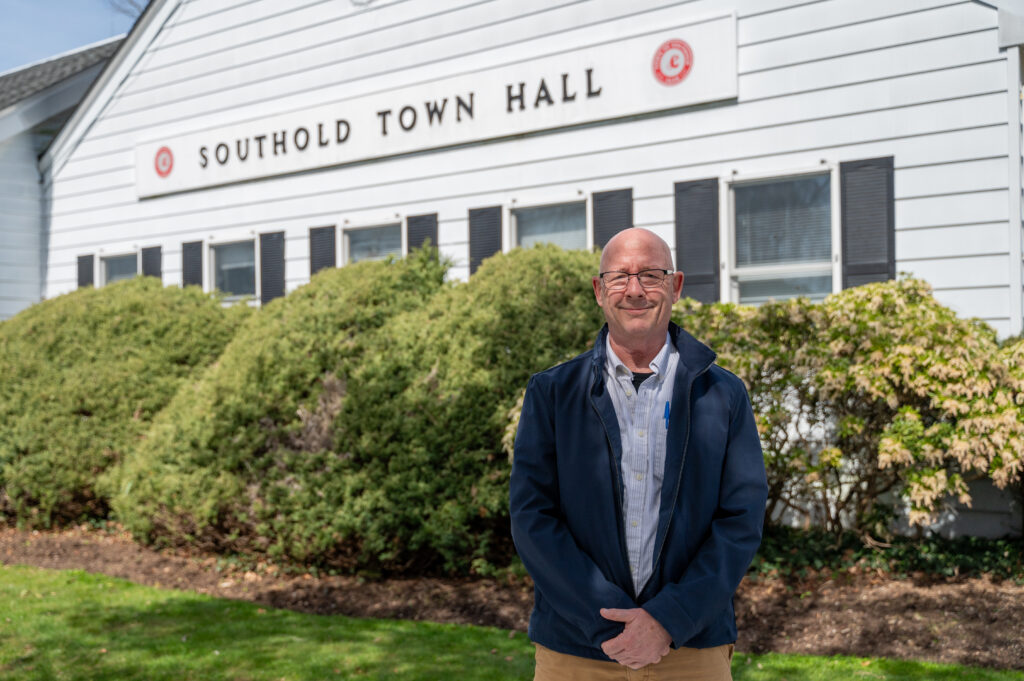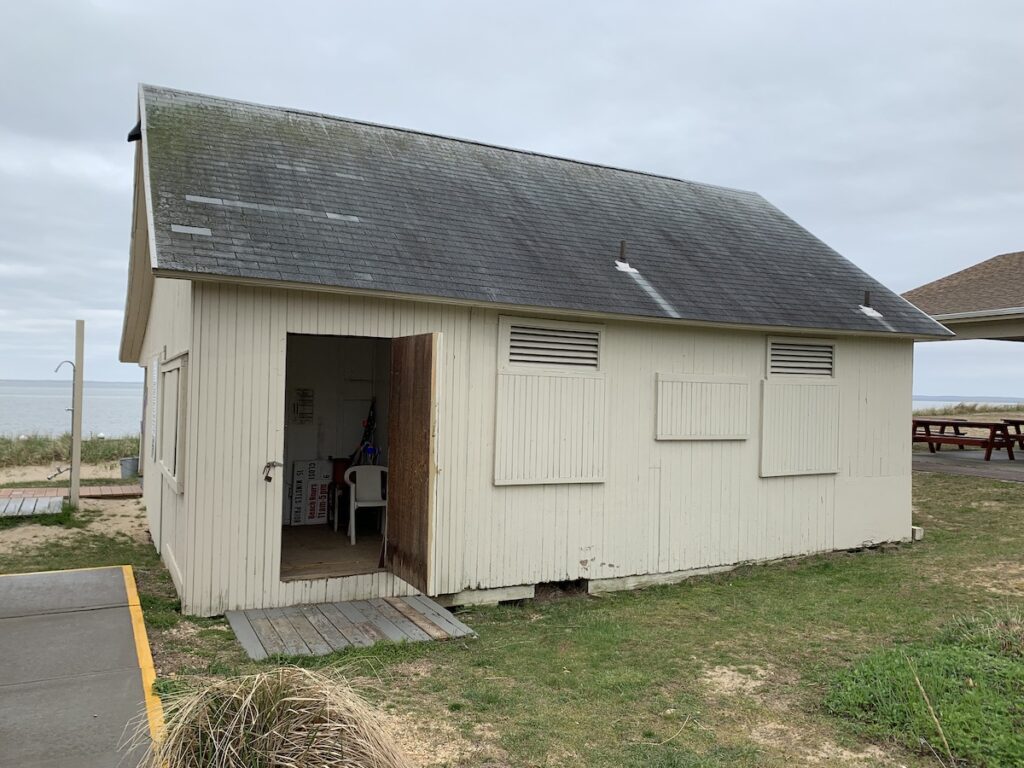Town Board divided on buildings study and location of new justice complex

The Southold Town Board plans to form a task force to look at municipal needs around town, after tempers flared at a Tuesday work session during a discussion about a new Justice Court.
The first meeting will be held before the end of this month, Town Board member Greg Doroski said during the regular Town Board meeting later Tuesday. He said the town is “committed to putting together a really aggressive timeline to lay out what these needs are, to do a use analysis and needs analysis and really put together a plan.”
At a March 1 work session, a majority of Town Board members had indicated they would vote in favor of a $6 million bond to build a new Justice Court in Peconic. Mr. Doroski said he would vote against the proposal along with Supervisor Scott Russell.
At Tuesday’s work session, Mr. Doroski suggested forming a task force to take a more holistic approach to town needs, an idea initially posed by Mr. Russell. He pointed to police facilities, which he said don’t meet requirements needed for accreditation, and pushed for an overall needs assessment.
Town Board member Louisa Evans pointed out that the town engineer has already compiled a list of town buildings that need work.
“I don’t disagree, it would probably be better to prioritize and really get down to the nitty gritty. I think [the town engineer] has done some of that. I’m just worried, we’ve worked on this Justice Court for I don’t know how long,” she said, adding that the court has been a need in town practically since she joined the Town Board.
“I will say when Greg had recommended putting the Justice Court out away from or separating it from the overall review of the town hall and the police station, I agreed with him,” Mr. Russell said. “But let’s face it, it’s been studied to death, we just need to find a better location for less money.”
Mr. Doroski said he had changed his mind about the approach to the Justice Court after learning more about the situation. He pointed out that this has been a problem for decades and suggested combining the police station and court as a potential solution.
“I really feel like we need to put pen to paper and say ‘this is what office space we need, this is how many parking spots we need, this is what kind of septic flow we need’ and quantify that on paper,” he said. “Not only what we need now, but what we need down the road. This is our opportunity to solve this problem.”
Town Board member Jill Doherty said there has been a task force that “pretty much” conducted a needs assessment and said she’s seen this same conversation play out since she started working with the town in the late 1980s.
“I don’t know if you’ve ever been in the Justice Court offices, but I wouldn’t want to work there,” she said. “I think we need to separate the court from the rest of it and we do have a basic needs assessment for every building and we have ideas on the court and the police department. We had a great idea that would fit everything but it was $30 million.”
Mr. Doroski said a 12-month timeline should be established to put the needs assessment together.
“The town annex purchase is a cautionary tale to us, here on the Town Board, of making decisions that aren’t fully vetted,” he said. “Two-thirds of the town offices, 14 years into your administration, are still split up because we have not solved the problem here.”
Mr. Russell pointed out that his administration has accomplished several major construction projects, including a transfer station, animal shelter and highway barn.
“You say the [Capital] One building was a bad purchase. In the spring of 2018, what would you have done?” he said. “Leadership requires firm, decisive action. What would you have done? You can’t give an answer without a soapbox.”
“This is not about a soapbox,” Mr. Doroski responded. “This is you getting stuck looking at the trees and not the forest here. This is an issue that has been going on for your entire administration.”
“We’ve been improving the town building inventory nearly the entire time I was here,” Mr. Russell said. “What would you have done when that building went up for sale? If the public deserves an answer, give it to them. You don’t have one and leadership requires that you make decisions based on change in circumstances.”
Mr. Doroski said it’s not a yes or no answer. He said there’s black mold downstairs in town hall, tarps over permanent file storage and cramped accommodations at the police department.
“That is the problem. And that right there is a failure of leadership,” he said.
Mr. Doroski said he agrees that the annex was a necessary purchase for the town in 2018. Ms. Nappa similarly said the building was needed at the time.
“I think when the annex was purchased, it was a necessity. Like you said, we had town employees that were going to be displaced, we had to do it,” she said. “But the part about looping the Justice Court in, and I know this is what Greg is getting at, is we thought that the Justice Court could go there. But we need actual plans and drawings and a clear understanding of whether the Justice Court could go there or not. And I think that’s where he’s feeling that that was lacking in the process of purchasing the annex and I think that’s what he’s afraid of in starting on Peconic Lane, because we don’t have drawings.”
She said it’s a lot of money to ask for and the town is going about the process the wrong way. She initially thought the town should work on the court separately but she doesn’t think it’s a good idea anymore.
“We’re going to spend so much of our political capital with the community going into this, that these other buildings that are super important, which is town hall and the police station, are not going to get done,” she said. “What I would like to do is pull back and sort of look at this more as a package again. I know we pulled it out just to try to get something done, but I don’t think it’s the way to go. I’ve had a lot of feedback from the community. We know that we need it but the community is not going to be on board with $6 million for a courthouse.”
Mr. Russell pointed out that he has been saying that the town should step back.
“I didn’t support it. [Mr. Doroski’s] the one that said we should pull it out and I backed him up because he thought it was the right idea,” he said. “Stepping back? You’re right, I wish I had thought of it. Oh, that’s right, I did. But at the same time, the Justice Court at this point has been discussed to death. We cannot wait for yet another study. What we need is a less expensive building in a better location.”
Ms. Doherty pointed out that the town can’t take out a bond for the court unless there’s a spot for it, including to pay for an engineering study.
“We can’t just design a court any way we want. There’s specific laws and rules that we’re told what to do with spacing,” she said.
Mr. Doroski pointed to a letter he wrote, published in The Suffolk Times, in which he stated the town should work with the Office of Court Administration on questions related to the Justice Court. He also emphasized the need for a municipal task force to produce an assessment and forecast of “needs” and “wants,” as well as a building and property utilization study.
Several members spoke over each other until Mr. Russell cut in again.
“Now it’s my turn, you got plenty of chance to talk. Now at the same time, you’re saying at two separate meetings, we should hold the court out separately, so I agreed with you,” Mr. Russell said. “And by the way, your plan is a good plan. You know why I know it’s a good plan? It’s my plan!”
“Can we make this a discussion that’s not just between the two of you?” Ms. Evans said. “Scott [Russell] may want to find a different place for [the court house], but that plan, that’s been a need since practically I came on, which was a long time ago.”
Ms. Evans said she agrees there should be a plan for all government buildings, but the courthouse has already been prioritized and putting it off will only give an opportunity for prices to go up.
Mr. Russell suggested tapping into retired engineers and architects in Southold Town to form a task force, but Mr. Doroski said the town should hire a municipal architect so there’s “clear accountability.”
“I will go on record and say, in spirit, I agree with you that the court is, you know, the top priority. But I think again, we need to look at the big picture and see what’s the best way to solve this? What’s easiest and what’s the cheapest?” Mr. Doroski said.
Ms. Nappa said she thinks the town definitely needs to involve the public at some point but she would still be “interested in entertaining the idea of bringing in either an architect or a consultant.”
“It’s going to be a lot more money, a lot more time. And it’s not going to get done. I’ve been watching this for over 30 years. And this is what happens, from time and time again,” Ms. Doherty said.
Town Board member Brian Mealy, who was quiet through most of the discussion, said he feels like there’s an opportunity to move forward collectively but he also thinks there needs to be more information before the town moves forward.
“I want to give the task force a chance to say what the requirements are, what is needed to really buckle that down,” Mr. Mealy said. “My personal choice is to say, do it, but you know, I want to do it in a timely fashion.”
Mr. Russell said he thinks it could take more than a year and six figures to conduct the assessment. The Town Board agreed to continue discussing the court building with other town employees.








